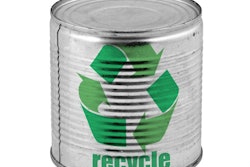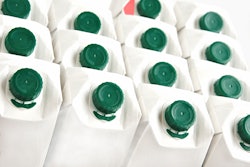
U.S. consumers and businesses needlessly trash billions of pounds of food every year as a result of America’s dizzying array of food expiration date labeling practices, which need to be standardized and clarified, according to a new report co-authored by the Natural Resources Defense Council and Harvard Law School's Food Law and Policy Clinic. One key finding from an industry-conducted survey: More than 90% of Americans may be prematurely tossing food because they misinterpret food labels as indicators of food safety.
“Expiration dates are in need of some serious myth-busting, because they’re leading us to waste money and throw out perfectly good food, along with all of the resources that went into growing it,” says Dana Gunders, NRDC Staff Scientist with the Food and Agriculture Program. “Phrases like ‘sell by,’ ’use by,’ and ‘best before’ are poorly regulated, misinterpreted, and lead to a false confidence in food safety. It is time for a well-intended but wildly ineffective food date labeling system to get a makeover.”
NRDC and Harvard Law’s study, “The Dating Game: How Confusing Food Date Labels Lead to Food Waste in America," is a first-of-its-kind legal analysis of the tangle of loose federal and state laws related to date labels across all 50 states and presents recommendations for a new system for food date labeling. The report is a follow-up to NRDC’s 2012 Wasted report, which revealed that Americans trash up to 40% of our food supply every year, equivalent to $165 billion.
Challenges with current food dating system
For the vast majority of food products, manufacturers are free to determine date shelf life according to their own methods. The report finds that the confusion created by this range of poorly regulated and inconsistent labels leads to results that undermine the intent of the labeling, including:
• False notions that food is unsafe: Ninety-one percent of consumers occasionally throw food away based on the “sell by” date out of a mistaken concern for food safety even though none of the date labels actually indicate food is unsafe to eat.
• Consumer confusion costs: An estimated 20% of food wasted in U.K. households is due to misinterpretation of date labels. Extending the same estimate to the U.S., the average household of four is losing $275 to $455 per year on food needlessly trashed.
• Business confusion costs: An estimated $900 million worth of expired food is removed from the supply chain every year. While not all of this is due to confusion, a casual survey of grocery store workers found that even employees themselves do not distinguish between different kinds of dates.
• Mass amounts of wasted food: The labeling system is one factor leading to an estimated 160 billion pounds of food trashed in the U.S. every year, making food waste the single largest contributor of solid waste in the nation’s landfills.
Two main categories of labeling exist for manufacturers: those intended to communicate among businesses, and those for consumers. But they are not easily distinguishable from one another, and neither is designed to indicate food’s safety. “Sell by” dates are a tool for stock control, suggesting when the grocery store should no longer sell products in order to ensure the products still have shelf life after consumers purchase them. They are not meant to communicate with consumers, nor do they indicate the food is bad on that date. “Best before” and “use by” dates are intended for consumers, but they are often just a manufacturer’s estimate of a date after which food will no longer be at peak quality; not an accurate date of spoiling or an indication that food is unsafe. Consumers have no way of knowing how these “sell by” and “use by” dates have been defined or calculated, since state laws vary dramatically, and companies set their own methods for determining the dates, none of which helps to improve public health and safety.
“We need a standardized, commonsense date labeling system that actually provides useful information to consumers, rather than the unreliable, inconsistent, and piecemeal system we have today,” says Emily Broad Leib, lead author of the report and Director of Harvard Law School’s Food Law and Policy Clinic. “This comprehensive review provides a blueprint calling on the most influential date label enforcers—food industry actors and policymakers—to create and foster a better system that serves our health, pocketbooks, and the environment.”
History of expiration dates
Use of expiration dates for food stem from consumer unease about food freshness mounting over the 20th century, as Americans left farms and lost their connection to the foods they consume. By 1975, a nationwide survey of shoppers showed 95% of respondents considered date labels to be the most useful consumer service for addressing freshness. The widespread concern prompted over 10 congressional bills introduced between 1973-1975 alone, to establish requirements for food dating. During that time, the General Accounting Office (GAO) issued a report to Congress advocating a uniform national date labeling system to avoid confusion. Despite GAO’s prophetic advice, none of the legislative efforts gained enough momentum to become law. Instead, the 1970s began the piecemeal creation of today’s fractured American date labeling regime.
While the U.S. Food and Drug Administration (FDA) and U.S. Department of Agriculture have the power to regulate food labeling to ensure consumers are not misled, both agencies have failed to adequately exercise their authority. FDA does not require food companies to place any date labels on food products, leaving the information entirely at the discretion of the manufacturer. The only product for which a date is federally regulated is infant formula.
Recommended changes
Food producers and retailers can begin to adopt the following recommended changes to date labels voluntarily but government steps, including legislation by Congress and more oversight by FDA and USDA, should be considered as well:
• Making “sell by” dates invisible to consumers, as they indicate business-to-business labeling information and are mistakenly interpreted as safety dates.
• Establishing a more uniform, easily understandable date label system that communicates clearly with consumers by 1) using consistent, unambiguous language; 2) clearly differentiating between safety- and quality-based dates; 3) predictably locating the date on package; 4) employing more transparent methods for selecting dates; and other changes to improve coherency.
• Increasing the use of safe handling instructions and “smart labels” that use technology to provide additional information on the product’s safety.
“The scale of food waste worldwide is one of the most emblematic examples of how humanity is needlessly running down its natural resources. This new report comes on the heels of one compiled by the UN's Food and Agricultural Organization, which points out that 28 percent of the world's farmland is being used to produce food that is not eaten—an area larger than China,” says Achim Steiner, UN Under-Secretary General and UN Environment Programme (UNEP) Executive Director. "Everyone, every business, every city, state, and government should do something to tackle this wastage to help reduce the global Foodprint.”
























